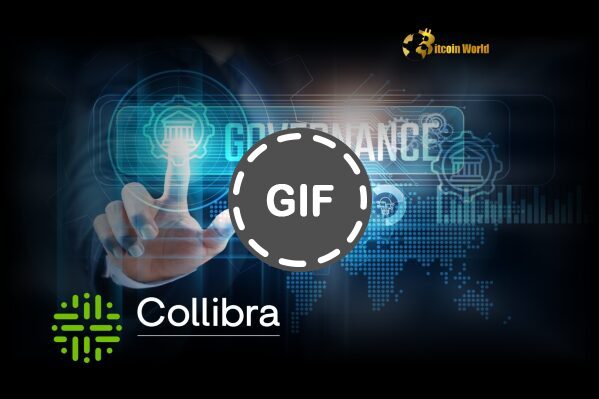BitcoinWorld

Google Age Estimation: A Crucial Step Towards Safeguarding Youth Online
The digital world is constantly evolving, bringing with it both incredible opportunities and complex challenges, especially concerning data, identity, and protection. For many, particularly those immersed in the cryptocurrency space, where decentralization and user control are paramount, the concept of digital identity and how it’s managed is always a top priority. Now, a major tech player like Google is taking a significant stride, exploring new frontiers in how it understands and protects its users. This move involves advanced Google age estimation technology, signaling a broader industry shift towards more robust digital safeguards.
What is Google’s Age Estimation Technology?
Google is currently experimenting with a groundbreaking machine-learning-powered system in the U.S. designed to accurately determine the age of its users. The primary goal? To filter content and tailor experiences across all Google products, ensuring that users receive age-appropriate material. This initiative is a direct response to the growing need for a safer online environment, particularly for younger audiences. While it’s in its testing phase, this development marks a significant shift in how digital platforms manage access and content.
This innovative system doesn’t rely on a single data point. Instead, Google’s sophisticated algorithms will analyze a range of information from your Google account. This includes the types of details you’ve searched for, the categories of videos you’ve watched on YouTube, and other behavioral patterns that can provide clues about your age. It’s a comprehensive approach, aiming for accuracy without requiring explicit age declarations upfront for every interaction.
How Does AI Age Verification Work?
The core of this new system lies in its advanced AI age verification capabilities. Rather than simply asking for a birth date, Google’s machine learning models are trained on vast datasets to recognize patterns indicative of different age groups. When the company’s tool determines that a user might be under 18, they will receive an email detailing how their Google product experience might change. This proactive notification is designed to inform users transparently about the adjustments being made to their accounts.
Google has clarified that its approach involves a combination of ‘age estimation’ and, when necessary, ‘age verification.’ This means that while AI might estimate your age based on your activity, if there’s uncertainty or a need for confirmation, Google might then prompt for a more direct form of age verification, such as a photo of a government ID or a selfie. This two-pronged strategy aims to balance user convenience with the imperative of accurate age gating.
Empowering Online Youth Protection: Changes for Underage Users
For users identified as being under 18, Google will implement a series of significant changes across its ecosystem. These measures are designed to enhance online youth protection and create a safer, more controlled digital experience. Here’s a breakdown of the key adjustments:
- Google Maps Timeline Disabled: The timeline feature in Google Maps, which tracks and displays a user’s location history, will be turned off. This helps protect the privacy and whereabouts of minors.
- No Personalized Ads: Underage users will no longer receive personalized advertisements. This reduces the risk of exposure to targeted marketing that might be inappropriate or exploit their vulnerabilities.
- Restricted Age-Gated Ad Categories: Specific ad categories that are age-restricted will be blocked, further shielding young users from potentially harmful or unsuitable commercial content.
- Bar from Adult-Themed Apps on Play Store: Access to applications on the Google Play Store deemed adult-themed will be restricted, ensuring that only age-appropriate content is available for download.
- Prevention of Repeated Exposure to Triggering Content: Google will also work to prevent underage users from repeatedly accessing certain kinds of content that could be detrimental, such as content that might trigger body image issues. This proactive filtering aims to safeguard mental well-being.
Fostering Digital Well-being on YouTube and Beyond
Beyond content filtering, Google’s initiative extends to promoting overall digital well-being, particularly on platforms like YouTube. The company will automatically enable specific features aimed at encouraging healthier consumption habits for younger users:
- Break Reminders: These notifications will prompt users to take breaks after extended periods of watching videos, encouraging a healthier balance.
- ‘Go to Bed’ Notifications: For those consuming videos late at night, these reminders will gently nudge users to stop watching and get adequate rest, helping to maintain healthy sleep patterns.
These features, initially rolled out for YouTube earlier this week, are now being integrated into the broader Google account age-gating system in the U.S. This consistent approach across products underscores Google’s commitment to creating a more responsible and mindful digital environment for its younger audience.
Navigating User Privacy and the Appeal Process
While the intent behind user privacy and protection is clear, any system that estimates or verifies age based on user data naturally raises questions about privacy. Google acknowledges these concerns, stating, “Age assurance helps us ensure that adults can access the information and services they need, while also applying the right protections for our younger users.” The company aims to strike a balance between safeguarding minors and respecting the privacy of all users.
Crucially, Google has implemented an appeal process for users who believe they have been mistakenly tagged as underage. If you find yourself in this situation, you can appeal the decision and provide proof of your age. This typically involves submitting a photo of your government-issued ID or a selfie for verification. This mechanism provides an important safety net, allowing users to correct any potential errors in the AI’s age estimation.
A Broader Industry Trend Towards Age Gating
Google is not alone in this endeavor. Other major platforms, including Instagram and Roblox, have also begun utilizing AI to estimate the age of their users. This collective movement reflects a growing industry-wide recognition of the need for better age assurance online. The push is also coming from lawmakers globally. In the U.S., several states have existing or proposed laws specifically addressing age gating and the protection of minors online. Similarly, platforms operating in the UK have started implementing age verification measures following the passing of the Online Safety Act.
This convergence of technological innovation and regulatory pressure is shaping a new era of digital responsibility. As AI capabilities advance, the ability to accurately assess user age becomes a powerful tool for platforms to comply with regulations and, more importantly, to fulfill their ethical obligations to protect vulnerable users. The ongoing experimentation by Google and others signals a future where digital experiences are increasingly tailored and safer for everyone, regardless of age.
Conclusion: A New Frontier in Digital Safety
Google’s ambitious experiment with machine-learning-powered age estimation in the U.S. represents a significant stride in the ongoing quest for a safer and more responsible digital landscape. By leveraging sophisticated AI to tailor content and experiences based on age, Google is setting a new precedent for how major tech companies approach online youth protection and digital well-being. While challenges related to user privacy and the accuracy of AI age verification remain, the implementation of an appeal process and the broader industry trend towards age gating suggest a collective commitment to creating a more secure online environment for the next generation. This crucial development underscores the evolving nature of digital identity and data management, themes that resonate deeply across all digital domains, including the rapidly expanding world of cryptocurrency and Web3.
To learn more about the latest AI market trends, explore our article on key developments shaping AI features.
This post Google Age Estimation: A Crucial Step Towards Safeguarding Youth Online first appeared on BitcoinWorld and is written by Editorial Team





